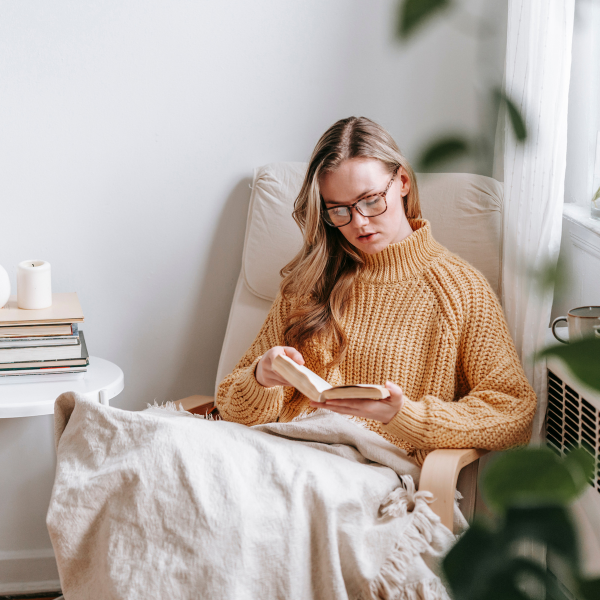What Is An Example Of Simple Living?

Do you feel overwhelmed by the complexity of modern life? Are you looking for ways to simplify your lifestyle? Simple living is a movement that advocates for reducing unnecessary complexity in our lives. It can be motivated by philosophy, financial goals, environmental and social consciousness, stress relief, social goals, or life experience.
There are several different flavors of simple living, and people often become designers or adopt DIY as a preference to achieve their goals.
Let’s explore some practical examples of simple living to help you start your journey toward a more fulfilling and sustainable lifestyle.
Simple living is a way of life that has gained popularity in recent years. It is a countercultural choice that values intentional living over accumulating possessions. By clarifying your values and creating your own definition of success, you can create more freedom in your life. Simple living means being selective with what you allow into your home and life, opting for a slower pace of living, and reducing unnecessary things from your schedule.

With a focus on frugality and practicality, simplifying gives you more time and money to spend on the things that matter most to you. As one notable figure in simple living, Joshua Becker, puts it, “Minimalism is the intentional promotion of the things we most value and the removal of anything that distracts us from it.”
You might enjoy these posts:
What is an example of simple living?
Simple is about eliminating unnecessary complexities from one’s life, which can be motivated by various factors such as financial goals, environmental and social consciousness, stress relief, social goals, or life experience.
There are several examples of simple living, including reducing the number of possessions one owns, depending less on technology and services, and spending less money.
Adherents of simple living may choose it for various reasons, such as increasing time for family and friends, personal taste, financial sustainability, increasing health, or reducing stress. Overall, simple living is about focusing on what’s important and reducing excess in all areas of life.
How do I start living a simple life?
The first step in embarking on a simple living journey is to reflect on your current life and identify areas where you can reduce complexity. Think critically about where you spend too much time, energy, money, and other resources that could be more efficiently allocated elsewhere. Once you’ve identified potential areas for simplifying, create an action plan outlining specific steps to take.
Once you have identified simplifying areas, commit to a specific goal or timeline to stay motivated and on track.
For instance, if you aim to reduce unnecessary possessions, establish a goal of how much space you’d like to clear out within the next month or two. You might also set small rewards for yourself when milestones are reached.
What are the rules of simple living?
Some key principles must be remembered when embarking on a simple living journey.
- First and foremost, be intentional with your choices and decisions. Take the time to carefully consider what you buy and how much of it you need. Prioritize quality over quantity and invest in items that will last you longer.
- Secondly, look for opportunities to reduce waste by reusing and recycling or investing in sustainable products. Try to live more off the grid whenever possible by using solar energy for your electricity needs.
- Lastly, practice mindfulness with everything from what you purchase to how you use things so that you can enjoy each moment instead of being distracted by material possessions.
By following these rules, simple living isn’t just a way to reduce clutter and clear up space—it’s also a mindset shift towards conscious consumption and intentional living that will ultimately bring more peace and satisfaction into your life.
What do you call a person who wants to live a simple life?
A person who wants to live a simple life can be called a minimalist. Minimalism is the intentional promotion of the things one values the most, paired with removing anything that distracts from it. It does not necessarily mean getting rid of everything one owns; it is about being mindful and intentional with what one chooses to keep in their life.
Minimalists strive to reduce consumption, focus on quality over quantity, prioritize experiences over possessions, and ultimately streamline their lives to focus on what truly matters.
By embracing these principles, minimalists hope to create more freedom in their lives and enjoy richer connections with family and friends. Ultimately, living a simpler life means having more time and resources to pursue the things that make you happy. If this sounds like something you’d like to explore, then why not start your journey into minimalism today?
Simple living is a philosophy and lifestyle choice that can profoundly affect one’s life. It involves reducing complexity, embracing frugality and practicality, being mindful of what possessions are kept in the home, and creating more financial and emotional freedom.
By following these simple living principles, you can create a life focused on what matters most to you and ultimately bring more peace and satisfaction into your life.
Now that we have answered the top questions about simple living, let’s dive into examples of simple living.

Minimizing Possessions
One of the primary principles of simple living is reducing clutter and possessions to create more freedom and space for experiences. In a minimalistic lifestyle, being mindful of what items you allow into your home and life is important.
The process can take time, but it doesn’t have to be overwhelming. Begin by looking at what you own and deciding what is truly necessary to maintain your desired lifestyle. Get rid of anything that is no longer useful or enjoyable, donates items you don’t need anymore, and stick with quality items over quantity when shopping for future needs.
By minimizing possessions, you will free up physical and mental space—allowing yourself room to explore new hobbies and activities and focus on spending time with family and friends.
Living a simple life is an ongoing journey that requires dedication and commitment. However, the process can be made easier by taking small steps, being mindful of your decisions, and focusing on what truly matters to you. So go ahead and start embracing the principles of simple living today!
Remember—simple living isn’t about deprivation; it’s about creating more joy in every aspect of life. Streamlining your possessions will create more freedom for meaningful experiences that bring more satisfaction and happiness into your life.
Dependence on Technology
Simple living is not only about minimizing possessions—it’s also important to be mindful of our dependence on technology. Technology can be a great resource when used in moderation, but it can also become an addiction if we allow ourselves to become too dependent on it.
This doesn’t mean you have to cut all ties with technology; instead, take the time to evaluate your relationship and determine what level of reliance is necessary for your lifestyle. By reducing tech usage, you will create more space for meaningful experiences that require presence and connection.
In today’s world, technology has become an integral part of our lives. From smartphones to laptops, we rely on these devices for our professional and personal needs. However, this dependence on technology is growing daily and is a matter of concern.
According to studies, around 77% of people believe that society as a whole relies too much on technology to succeed. This dependence on devices can negatively impact our mental and physical health, leading to anxiety and other issues.
One survey shows that 66% of people today suffer from nomophobia, or the fear of being away from their phones.
Spending Less Money
Another important aspect of simple living is spending less money. This doesn’t mean you must deprive yourself completely; instead, it involves being mindful and intentional with your purchases.
Rather than buying something just because it’s on sale or trendy, take the time to assess what items are truly necessary for your lifestyle. Invest in quality items that will last longer and shop around for better deals whenever possible.
It may sound difficult at first, but living a simpler life can actually be quite enjoyable once you get used to it. A minimalist lifestyle helps you save money and gives you more freedom—allowing you to pursue meaningful activities rather than material possessions.
Mindset and Beliefs
Living a simpler life isn’t just about getting rid of your possessions and spending less money; it’s also about changing your mindset and beliefs. This means being mindful of your wants and needs, embracing frugality, living within your means, and focusing on quality over quantity.
An example of this mindset shift would be recognizing that happiness does not come from material possessions but from meaningful experiences and relationships. Minimalists strive to focus on what makes them feel truly connected and fulfilled—whether it’s spending time outdoors, connecting with friends and family, or simply enjoying life’s simple pleasures.
By embracing this mindset shift, minimalists often feel more content and satisfied with their lives. This is because they can prioritize experiences over possessions—allowing for a deeper connection with the people around them and a greater appreciation for the world at large.
Personal Reasons for Adopting Simple Living
There are many reasons to adopt a simple living lifestyle. From reducing stress and anxiety to creating more space for meaningful experiences, many benefits come with choosing to lead a simpler life.
Some of the most common reasons for adopting a minimalistic lifestyle include:
• Creating financial freedom and security
• Reducing clutter and simplifying possessions
• Increasing mindfulness and focus on what truly matters in life
• Spending less money on items that are not needed
• More time for exploration, hobbies, relationships, and travel
• Lowering environmental impact by consuming fewer goods
• Improving mental and physical health by reducing stress and anxiety
Following these simple living principles can create a life focused on what matters most.
Environmental and Social Consciousness
One important aspect of simple living is environmental and social consciousness. People who choose to live simply often put more thought into their purchases, looking for items that are not only ethically produced but also made from sustainable materials.
This means being mindful of the supply chain and reducing the environmental impact of goods consumed—such as buying second-hand items or shopping locally whenever possible.
Also, minimalists strive to be socially conscious by supporting businesses with ethical practices and donating money or time to causes they feel passionate about.
By incorporating these principles into their lifestyle, people can help create a better future for generations while also feeling good about their actions.

Religious and Spiritual Traditions
In addition to environmental and social consciousness, many people who choose simple living also incorporate religious or spiritual traditions into their daily lives. These practices can include meditation, yoga, prayer, and other forms of mindfulness.
Simple living is often seen as a way to create balance in life—an important part of achieving inner peace and contentment. By connecting with the divine through these traditions, people get closer to understanding themselves and the world around them.
Incorporating these spiritual practices into your lifestyle can foster a deeper connection with yourself and those around you. This will lead to more meaningful relationships with the people in your life and help you appreciate the beauty of life on a deeper level.
Notable Figures in Simple Living
Finally, notable figures who have advocated for simple living include Mahatma Gandhi, Buddha, and Henry David Thoreau. Gandhi believed in a life of simplicity and self-sufficiency, while Buddha espoused simple living as a central virtue of Buddhism.
Thoreau famously lived in a cabin on Walden Pond, seeking to strip away the excesses of his time and reconnect with nature.
Other notable figures who have embraced simple living include Leo Tolstoy, Oprah Winfrey, and Marie Kondo, who advocates for decluttering and keeping only items that spark joy. These individuals serve as inspiration for anyone looking to simplify their life.
Living a simpler life has many benefits, from financial freedom to increased contentment and spiritual growth. It involves getting rid of the unnecessary items in your life, being mindful of your money, and focusing on what truly matters—experiences that bring joy and connection with others.
By cutting out distractions and embracing minimalism, people can find more balance in their lives, reduce stress levels, and gain more control over their finances. Additionally, minimalists often report feeling happier and more personally fulfilled than before they adopted this lifestyle.
Simple living may initially sound daunting; however, it doesn’t have to be an overnight change. Taking small steps towards creating a simpler life is all it takes to start seeing real results. By incorporating these principles into your life, you can achieve a lifestyle that brings contentment and joy.
